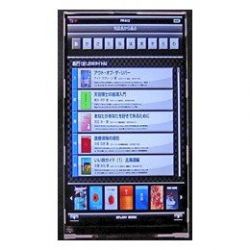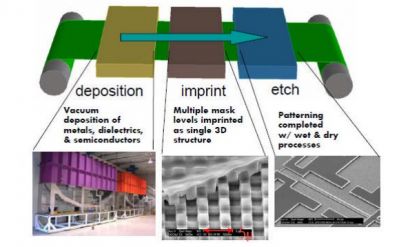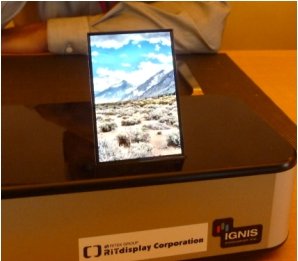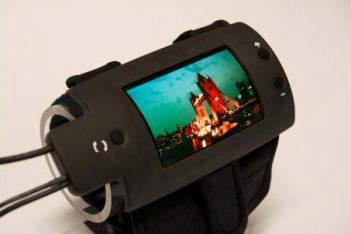 IGNIS Innovation, in partnership with Kodak and Prime View International (PVI), has developed a 5" segment of a 32" OLED HDTV AMOLED display, using industry standard amorphous silicon thin film transistors (TFT). The prototype uses IGNIS' MaxLIfe solution, which compensates separately for both the TFT and LED degradation using only an electrical feedback - an industry first. This technology does not use any optical sensors which are unreliable.
IGNIS Innovation, in partnership with Kodak and Prime View International (PVI), has developed a 5" segment of a 32" OLED HDTV AMOLED display, using industry standard amorphous silicon thin film transistors (TFT). The prototype uses IGNIS' MaxLIfe solution, which compensates separately for both the TFT and LED degradation using only an electrical feedback - an industry first. This technology does not use any optical sensors which are unreliable.
IGNIS reports 20 years lifetime (when watching 12 hours a day), there is no burn-in images (the MaxLife technology keeps differential aging to 3% or less). The prototype was built using an amorphous silicon backplane from PVI using their standard a-Si LCD mass production process while the frontplane uses Kodak's long life and low power RGBW technology that delivers a vivid and outstanding viewing experience. They say that this combination provides the first reliable, low ost and scalable architecture.
IGNIS has also shown a 2.2" QVGA (181ppi) display module, using their AdMo (Advanced Mobile) compensation platform. They report over 50,000hrs lifetime (in house testing), large temperature range (-30c to 80c), suitable for automotive applications. The sophisticated compensation technology is built entirely in-pixel, meaning low-cost driver ICs are used, lending itself to a simple ‘drop-in’ display that is easily swappable into devices using legacy LCDs. The AdMo prototype use an amorphous silicon backplane, the standard TFT of the LCD industry that has traditionally been regarded as unusable for AMOLED displays. However, through its patented technology IGNIS is able compensate for the low mobility and in-stabilities of amorphous silicon, and as a result, for no additional capital investment costs, enables the manufacture of AMOLED backplanes at existing TFT plants.












